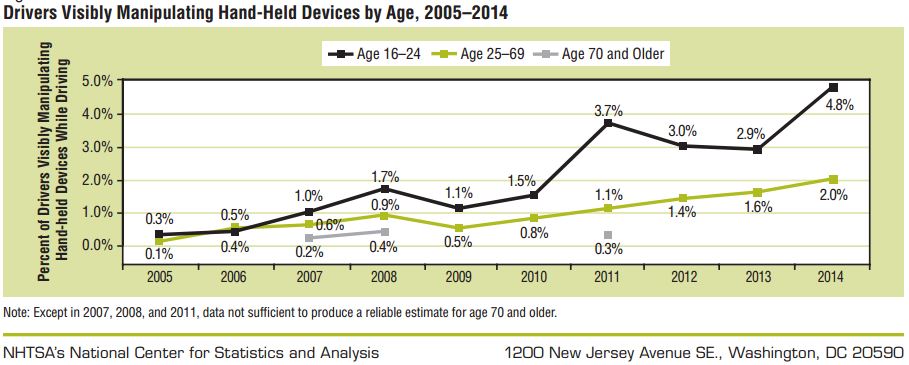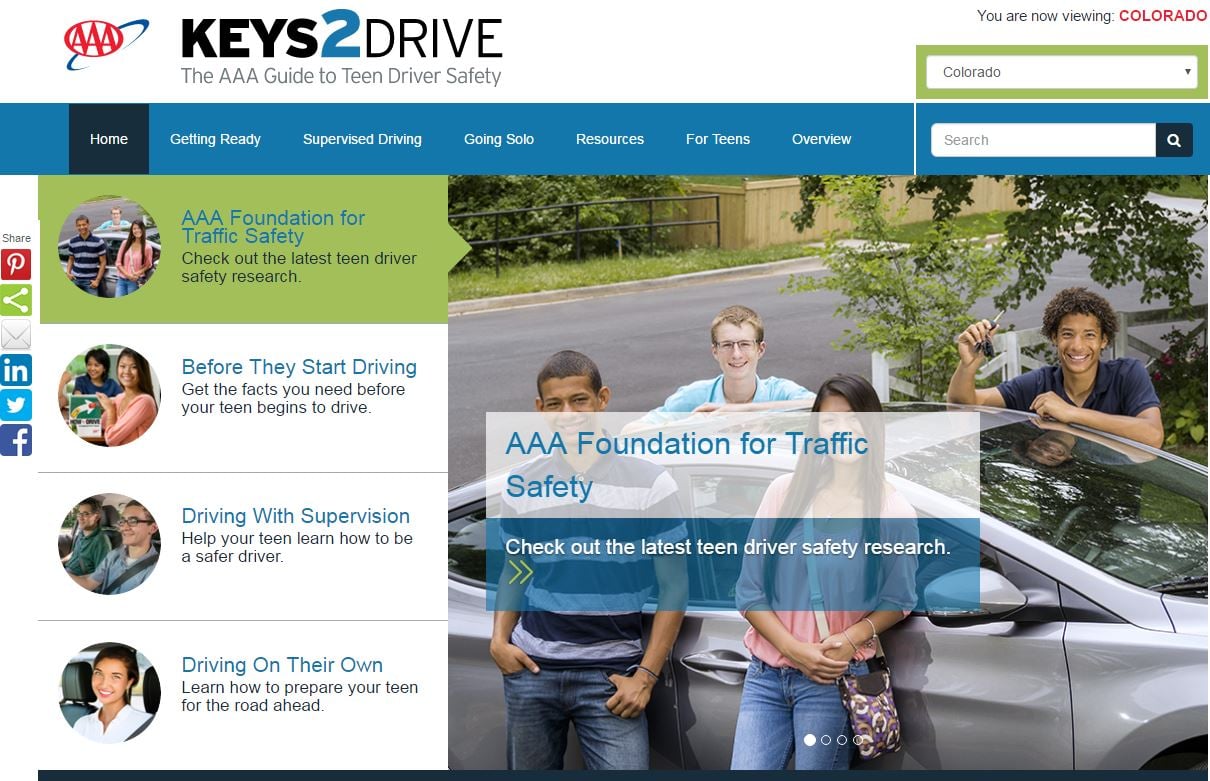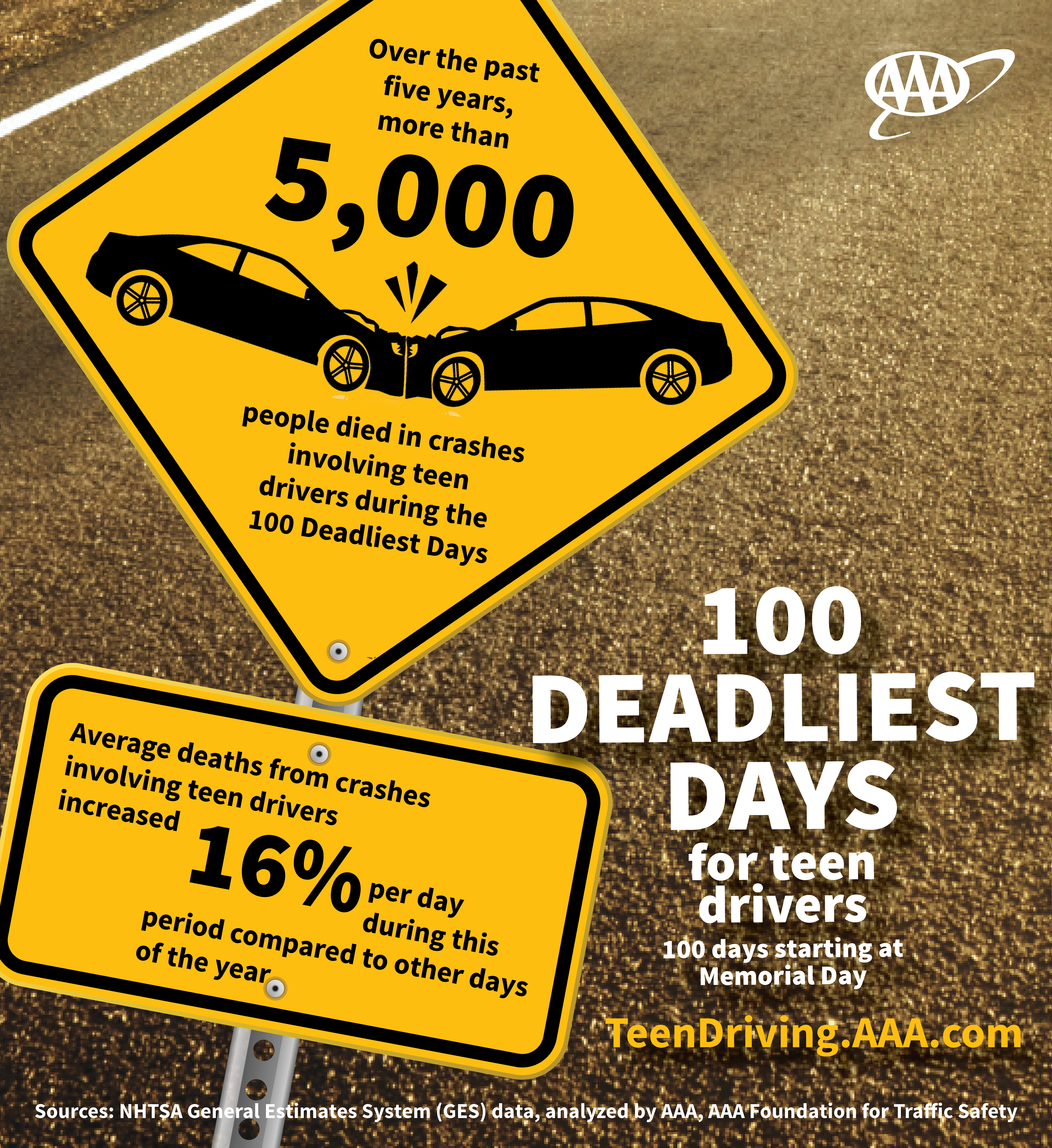Sadly, crashes for teen drivers increase significantly during the summer months because teens drive more during this time of year.
Just in time for summer and increased teen driving, the AAA Foundation for Traffic Safety has released a study confirming that nearly 60% of teen crashes involve distractions behind the wheel. The research also finds a disturbing trend showing that texting and social media use are on the rise amongst teen drivers.
“Every day during the summer driving season, an average of 10 people die as a result of injuries from a crash involving a teen driver,” said Jurek Grabowski, research director for the AAA Foundation for Traffic Safety. “This new research shows that distraction continues to be one of the leading causes of crashes for teen drivers. By better understanding how teens are distracted on the road, we can better prevent deaths throughout the 100 Deadliest Days and the rest of the year.”
Trends in teen driver crashes
The AAA Foundation analyzed the moments leading up to a crash in more than 2,200 videos captured from in-car dash cameras. The latest report compared new crash videos with those captured from 2007 -2012.
You might be surprised to learn that the No. 1 distraction for teens is not related to their cell phone use. Keep reading for an overview of the latest AAA Foundation for Traffic Safety findings on trends in teen driver crashes:

Nearly 60% of teen crashes involve distractions behind the wheel. (Photo: iStock)
Top distractions
The AAA Foundation study found the following to be the top three distractions for teens when behind the wheel in the moments leading up to a crash:
- Talking or attending to other passengers in the vehicle (15% of crashes).
- Talking, texting or operating a cell phone (12% of crashes).
- Attending to or looking at something inside the vehicle: (11% of crashes).
Between 2007 and 2015 an average of 59% of crashes contained some type of potentially distracting behavior during the six seconds leading up to a crash.
The latest government statistics indicate that, in 2014, 10% of teen drivers involved in a fatal crash were reported to have been distracted at the time of the crash. Proportionally, this is more than any other age group.
The AAA Foundation report notes that experts believe that the government statistics substantially underestimate the prevalence of driver distraction. Data suggests that the true proportion of crashes that can be attributed to distraction and inattention is likely much higher.
Related: 10 best and worst states for teen drivers

In the moments leading up to a crash, teens were more likely to be texting or looking down at the phone than talking on it. (Photo: iStock)
Cellphones, texting and social media
Researchers found that how teens use their cellphone when behind the wheel changed significantly over the course of the study. In the moments leading up to a crash, teens were more likely to be texting or looking down at the phone than talking on it. This supports findings by the Pew Research Center, which shows text messaging has become a key component in day-to-day interactions amongst teenagers.
“It’s no secret that teens are extremely connected to their cell phones,” said Jennifer Ryan, AAA director of state relations. “Many teens are texting or using social media behind the wheel more often than in the past, which is making an unsafe situation even worse.”
Research by the Virginia Tech Transportation Institute found that texting creates a crash risk 23 times worse than driving while not distracted. A recent AAA Foundation survey shows that nearly 50% of teen drivers admitted they had read a text message or e-mail while driving in the past 30 days. NHTSA’s National Occupant Protection Use Survey also shows that from 2007 to 2014, the percentage of young drivers seen visibly manipulating a hand-held device quadrupled (see chart below).
(Source: NHTSA Driver Electronic Device Use in 2014)
Keeping cellphones out of the hands of teen drivers is a top priority for AAA. The association’s advocacy efforts are helping to protect teens by working to pass graduated driver licensing laws and teen wireless bans in states across the country.
Related: New technology prevents cell phone use while driving
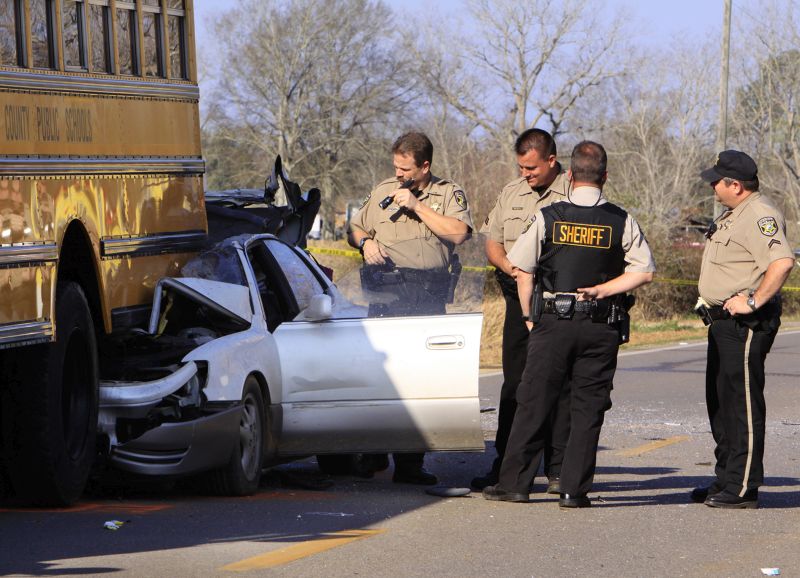
Mobile County Sheriff Deputies examine a car involved in an early morning accident that killed 16-year-old LaDonna Perryman, who was driving on Old Pascagoula Road in Grand Bay, Alabama. (Photo: Michelle Rolls/Press-Register via AP Photo)
Increase in rear-end crashes for teens
From 2007 to 2015, there was a significant increase in the proportion of teen driver crashes in this study that were rear-end collisions. Rear-end crashes most often involve a driver who is following too closely and/or responding too slowly due to inattention or distraction.
While it's possible that teens have started following more closely, it seems more likely that distraction has led to an increase in eyes off road time, slower reaction times and therefore, an increase in the proportion of crashes that are rear-end crashes.
A in-depth examination of rear-end crashes showed there was a significant increase in the proportion of crashes in which the driver was operating/looking at a cellphone, from 15.3% in 2008 to 27.9% in 2014.
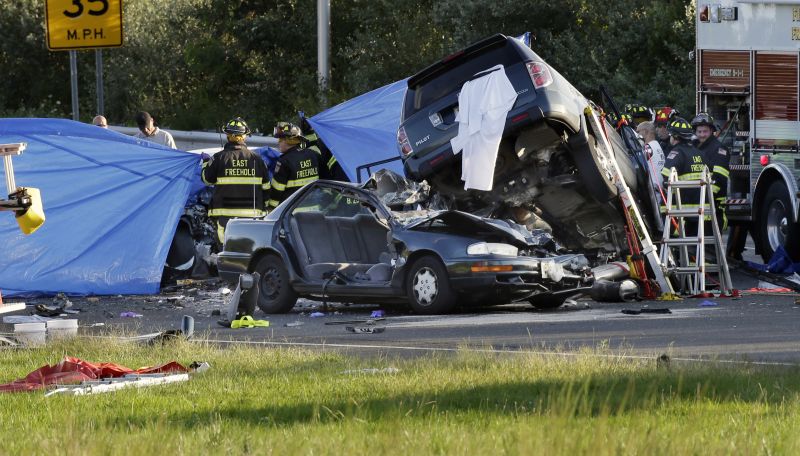
Police and firefighters work at a crash scene, Aug. 19, 2014, in Freehold, N.J. Authorities say they are investigating the crash in Freehold that left three people dead and another person in critical condition. (Photo: Mel Evans/AP Photo)
Deaths linked to teen drivers
“Nearly two-thirds of people injured or killed in crashes involving a teen driver are people other than the teen themselves,” according to Ryan. “This shows that teen drivers can be a risk to everyone on the road and it is important to regulate their actions when behind the wheel.”
Over the past five years during the summer 100 Deadliest Days:
- An average of 1,022 people died each year in crashes involving teen drivers.
- The average number of deaths from crashes involving teen drivers ages 16-19 increased by 16% per day compared to other days of the year.
Related: Best used vehicles for teens
Educational resources for parents and teens
The website TeenDriving.AAA.com offers a variety of tools to help prepare parents and teens for the dangerous summer driving season. A few tips include:
- Don't ride with teen drivers or transport other teens while a new driver. One of the most dangerous sources of distraction for teen drivers, whether due to horseplay, loud music, rowdy behavior or peer pressure, is teen passengers.
- Minimize various potential distractions, such as eating, drinking, chatting with a passenger, reading a map, personal grooming, reaching for things in the car or looking at people or objects unrelated to the driving task.
- Don't allow a cell phone to be used in the vehicle by you or your teen.
Below is an infographic from the AAA Foundation to share with clients, family and friends.
(Source: AAA Foundation for Traffic Safety)
Want to continue reading?
Become a Free PropertyCasualty360 Digital Reader
Your access to unlimited PropertyCasualty360 content isn’t changing.
Once you are an ALM digital member, you’ll receive:
- Breaking insurance news and analysis, on-site and via our newsletters and custom alerts
- Weekly Insurance Speak podcast featuring exclusive interviews with industry leaders
- Educational webcasts, white papers, and ebooks from industry thought leaders
- Critical converage of the employee benefits and financial advisory markets on our other ALM sites, BenefitsPRO and ThinkAdvisor
Already have an account? Sign In Now
© 2025 ALM Global, LLC, All Rights Reserved. Request academic re-use from www.copyright.com. All other uses, submit a request to [email protected]. For more information visit Asset & Logo Licensing.


